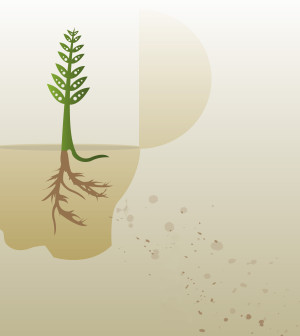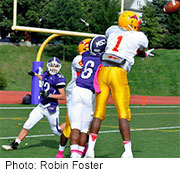- Skip Storing This Everyday Product in the Fridge Door
- Green Tea + B3 Pairing May Boost Brain Health
- Navigating Your Midlife Crisis: Embracing New Possibilities
- City Raccoons Showing Signs of Domestication
- Mapping the Exposome: Science Broadens Focus to Environmental Disease Triggers
- One Week Less on Social Media Linked to Better Mental Health
- Your Brain Changes in Stages as You Age, Study Finds
- Some Suicide Victims Show No Typical Warning Signs, Study Finds
- ByHeart Formula Faces Lawsuits After Babies Sickened With Botulism
- Switch to Vegan Diet Could Cut Your Greenhouse Gas Emissions in Half
Concussion Recovery Can Reverse After Return to Activity, Study Shows


Athletes who seem to have recovered from a concussion may actually show a subtle worsening in a particular mental ability after they return to exercise, a small study suggests.
The findings come from a study of 19 high school athletes who suffered a concussion and then got medical clearance to return to physical activity — most often football, although a few were on soccer, wrestling or volleyball teams.
Researchers found that for 12 of those athletes, a particular mental ability that had been improving post-concussion reversed course once they were up and moving again.
Specifically, the athletes’ ability to simultaneously walk and do simple mental tasks “regressed,” the researchers report in the journal Medicine & Science in Sports & Exercise.
In real-life terms, that means walking down the street while talking to a friend would be a bit harder, explained Li-Shan Chou, one of the researchers on the study.
The shift would be too subtle for a person to actually notice, said Chou, a professor of human physiology at the University of Oregon in Eugene.
But he and his colleagues were able to detect the regression in lab tests where the athletes walked while performing basic mental tasks — like listening to a spoken word, then saying whether it was a high or low pitch.
What does it all mean? That’s not clear, said Kenneth Podell, a concussion expert who was not involved in the study.
For one, since the study group was so small, the findings need to be replicated in larger studies to know whether they are “real,” according to Podell, co-director of the Houston Methodist Concussion Center in Texas.
He also questioned how the athletes could show an improvement in their test performance early on, when they were “most concussed,” but then worsen after all their other signs and symptoms had improved.
Chou agreed that the implications of his findings are unclear. For now, he said the study highlights the importance of giving concussions time to heal.
“Have patience, and give the brain time to recover,” Chou added.
According to the American Academy of Neurology (AAN), more than 1 million athletes in the United States suffer a concussion each year.
Concussion symptoms include headache, dizziness, nausea, ringing in the ears, fatigue and confusion — though these problems may not become noticeable until hours after the jolt to the head. And contrary to popular belief, concussions usually do not cause unconsciousness.
When athletes are recovering from a concussion, the “standard of care” is to gradually return them to physical activity before they can get back on the field, Podell said.
In fact, all 50 states and the District of Columbia now have some kind of law on youth concussions, protecting athletes from returning to the playing fields too soon.
But there is no “set timeline” for safe return to play, according to the AAN. And judging recovery is subjective, Chou said, because it involves asking patients how they feel.
The current findings are based on 19 high school athletes who were periodically assessed for two months after sustaining a concussion. All returned to physical activity, with medical clearance, during that time.
Chou’s team found that once they were active again, 12 of the athletes showed some reversal in their ability to walk and perform mental tasks simultaneously. The problem showed up as a subtle change in their walking speed or balance.
Still, Podell said, it’s not clear what to make of that. Even if the athletes’ gait did regress when they first started physical activity, it might have been “fine” by the time they got back into their sport, he noted.
“The take-away for parents is, the return from concussion is complex, and the best clinical practice calls for a slow and gradual return to activity under the guidance of professionals,” Podell said.
But it’s not only physical activity that matters, he added. Concussed kids should also take a break from mental stress and only gradually return to schoolwork.
“Just because a student-athlete is ready to exercise does not mean they are 100-percent ready for a full load at school,” Podell said.
More information
The U.S. Centers for Disease Control and Prevention has more on post-concussion return to play.
Source: HealthDay
Copyright © 2025 HealthDay. All rights reserved.










